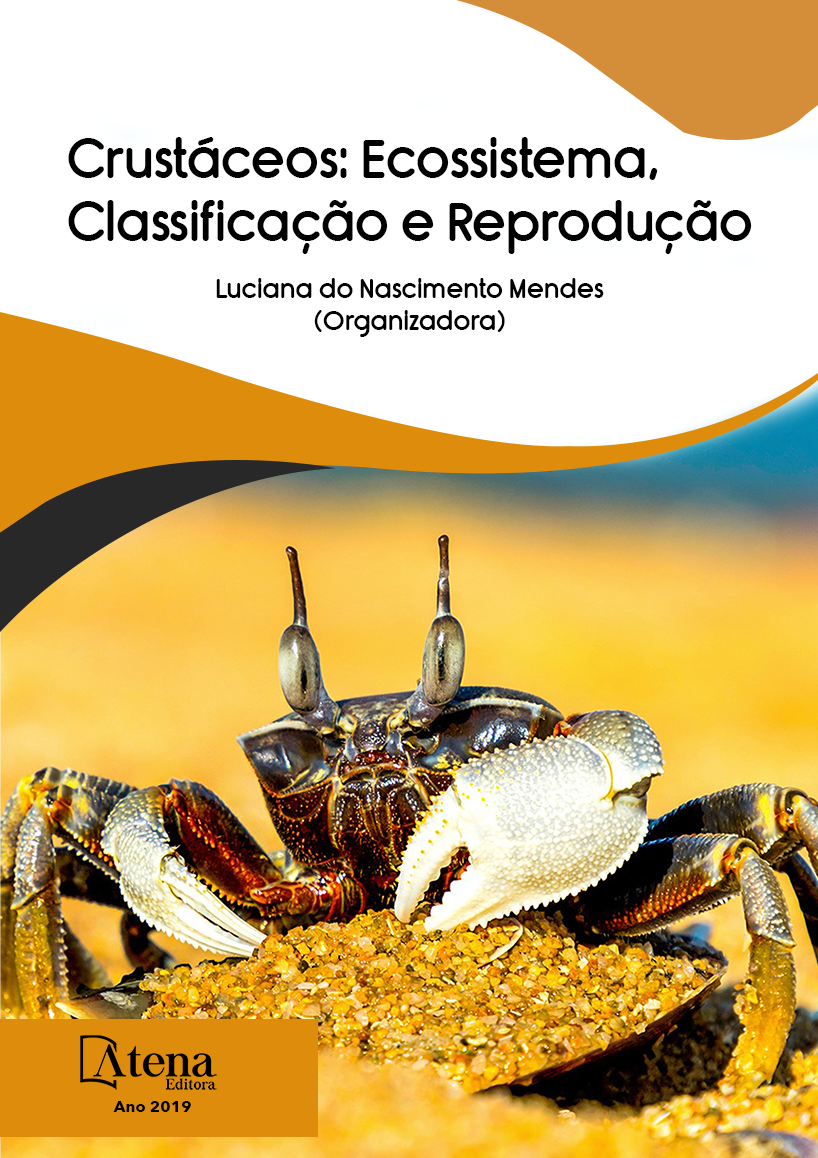
A ATIVIDADE DE CAPTURA DE CARANGUEJOS E SIRIS NOS MANGUEZAIS DE MACAU-RN
Os manguezais são locais importantes para a reprodução e a alimentação de uma grande diversidade de animais aquáticos, bem como aves, répteis, insetos e seres microscópicos. Neste ambiente alagado, encontramos inúmeras espécies de crustáceos, principalmente os braquiúras decápodos, como os caranguejos e siris. No município de Macau, Estado do Rio Grande do Norte, existe uma grande faixa de manguezal
e há também a formação de um delta na foz do rio Açú. Entretanto, há um grande descaso quanto à manutenção deste recurso natural, devido à poluição, ao desmatamento e à captura predatória de crustáceos. Moradores do município contam que no período de “andada” de caranguejos-uçá, Ucides cordatus, muitas pessoas os capturam usando sacos. Lixo acumulado é muito comum às margens do estuário, bem como esgotos clandestinos. Quanto ao guaiamum, Cardisoma guanhumi, devido à sua rusticidade, torna-se mais difícil sua captura, sendo necessário o uso de armadilhas. Por conta disso, há pobreza de dados estatísticos quanto à população e à captura destes crustáceos. Considerando o exposto, o objetivo deste trabalho foi analisar informações coletadas junto a pescadores e pescadoras, catadores e catadoras de caranguejos e marisqueiras, bem como nas Colônias de Pescadores Z-09 e Z-41 de Macau, em relação ao ambiente manguezal e à população desses crustáceos. Utilizou-se um questionário semiestruturado, aplicado aos profissionais entrevistados, assim como relatos também foram gravados. Foram entrevistadas 30 pessoas. Destas, 12 pescadores entrevistados, incluindo o presidente da Colônia Z-41, citaram que havia bastante caranguejouçá na região. O presidente da colônia contou que já houveram tantos guaiamuns que estes entravam nas casas dos moradores locais. Outro pescador relatou que hoje já não há a mesma quantidade de caranguejo-uçá na faixa de manguezal do distrito de Diogo Lopes. Citou também que, quando sai ao mar, se preocupa em armazenar todo do lixo produzido e trazê-lo de volta à terra, porém, outros pescadores não têm a mesma visão ecológica. Há também catadores de outros Estados que vêm “catar” guaiamum e caranguejo-uçá e, por falta de fiscalização, há perda de dados e danos ao meio ambiente, pois alguns deles escavam a terra, destruindo as tocas de guaiamuns, ou usam redinhas para o uçá. Já o siri, do gênero Callinectes, é capturado por mulheres marisqueiras, que extraem sua carne para processamento, de forma artesanal, e posterior venda, mas o consumo na região é muito pequeno. De acordo com uma pescadora que atua na pesca do siri, sua carne após extração é vendida a R$ 27,00 direto ao consumidor, muitos deles vindos de Natal.
A ATIVIDADE DE CAPTURA DE CARANGUEJOS E SIRIS NOS MANGUEZAIS DE MACAU-RN
-
DOI: 10.22533/at.ed.8881919111
-
Palavras-chave: captura de caranguejos, caranguejo-uçá, guaiamum, siris, manguezais.
-
Keywords: crabs, uçá crab, guaiamum, mangrove.
-
Abstract:
Mangroves are important sites for breeding and feeding a wide variety of aquatic animals, as well as birds, reptiles, insects and microscopic beings. In this flooded environment, we find numerous species of crustaceans, especially decapods braquiura, such as crabs. In Macau, in the State of Rio Grande do Norte, there is a large swath of mangrove swamps, and there is also a delta at the mouth of the Açu River. However, there is great disregard for the maintenance of this natural resource due to pollution, deforestation and predatory capture of crustaceans. Residents of the municipality say that in the period of “walking” of uçá crabs, Ucides cordatus, many people catch them using sacks. Accumulated litter is very common on the banks of the estuary as well as underground sewers. As for the guaiamum, Cardisoma guanhumi, due to its rusticity, its capture becomes more difficult, being necessary the use of traps. As a result, there is a lack of statistical data on population and catch of these crustaceans. Considering the above, the objective of this work was to analyze information collected from fishermen, collectors of crabs and shellfish, as well as in the Z-09 and Z-41 Fishermen Colonies of Macau, in relation to the mangrove environment and the population of these crustaceans. A semi-structured questionnaire was used, applied to the professionals interviewed, as well as reports were also recorded. Thirty people were interviewed. Of these, 12 fishermen interviewed, including the president of Colônia Z-41, mentioned that there was enough uçá crab in the region. The president of the colony said that there were so many guaiamuns that they entered the houses of the local residents. Another fisherman reported that nowadays there is no longer the same amount of uçá crab in the mangrove strip of the district of Diogo Lopes. He also mentioned that, when he goes to sea, he worries about storing all the garbage produced and bringing it back to the land, but other fishermen do not have the same ecological vision. There are also scavengers from other states that come to “catch” guaiamum and uçá crab and, due to lack of inspection, there is loss of data and damage to the environment, since some of them dig the earth, destroying the burrows of guaiamuns. The crab, called Callinectes, is caught by shellfish women, who extract their meat for processing, in an artisanal way, and then sell it, but consumption in the region is very small. According to a fisherwoman who works in the crab fishery, her meat after extraction is sold at R$ 27,00 direct to the consumer, many of them coming from Natal.
-
Número de páginas: 15
- Cimara Carla de Andrade Monteiro
- Sandja Salette de Lima Fernandes
- Glenda Emanoely Costa Silva
- Jamilly Leite Olegario
- LUCIANA DO NASCIMENTO MENDES


